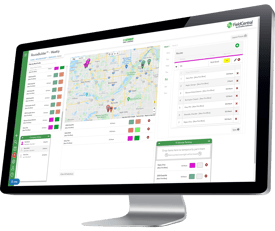
The green industry is a busy one, it's easy to get caught up in the pace and daily tasks that come with the business. In order to prioritize and organize daily work, you and your team need goals and motivation to look towards. The difference between green industry businesses that set goals and those that don't is noted in the longevity of their business. Here are a few ways to set effective goals.
1. Set SMART goals
In order to create a goal setting plan that will actually result in accomplishement of those goals, you need to follow a few guidelines. Each goal should be SMART, which means that the goal should be:
- Specific
- Measurable
- Attainable
- Realistic
- Timely
Each time you set a goal, give it the SMART test. If any one of the requirements of a SMART goal isn't met, you'll likely struggle with the goal. An example of a SMART long-term goal would be: 'Increase revenue by 5% in 3 years.' The goal is specific, measurable, attainable, realistic and timely. Don't decide on these goals yourself, have a meeting in order to set these goals and decide as a team if they are SMART.
2. Communicate
Communication is essential through everything you do in business. While setting your goals, it's important to the degree that your team will be working together to accomplish those goals. Think about how much more involved and willing your team will be to work hard if they're involved in the goal-setting process.
3. Track your goals
If you've made sure your goals are SMART, they should be measurable. The next step is to actually measure your goals. The way your goals should be measured is dependent on the specific goal.
If you are setting a monetary goal, you will need to track the numbers along the way. That’s what measurable means. Can you measure how close or far you are from the goal? If your goals is to increase sales by 5% within the year, update your sales numbers each week and compare them to what your goal number is.
4. Reward accomplishment
Goals for anyone, on any level should come with some type of motivation. Obviously, not losing your job is a great motivation. But monetary motivation works even better. Set up specific bonuses for each of your employees based upon the goals you set for them. What works for us is to set up quarterly bonuses and allow set bonuses when said goals are met.
5. Set long-term goals first
In order to understand where you need to be 3-years from now, you need to know where you need to be 1 year from now an so on and so forth. Before setting your 90-day goals, have your 1, 3 and 10 year goals down. The reason this is so important is because it sets a track for your business. Two questions to ask your team are:








